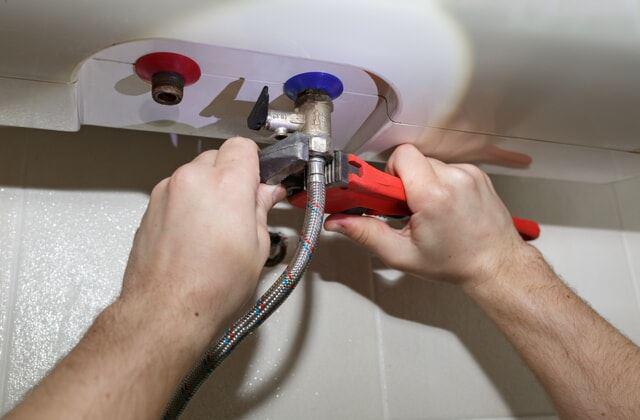Key Tips on Maintaining Your Home's Hot Water System
Key Tips on Maintaining Your Home's Hot Water System
Blog Article
Do you find yourself on the lookout for critical information on How to Maintain a Hot Water Heater in a Few Simple Steps?

Hot water is essential for day-to-day convenience, whether it's for a rejuvenating shower or washing recipes. To ensure your warm water system runs effectively and lasts longer, normal upkeep is essential. This article provides sensible ideas and insights on how to maintain your home's warm water system to stay clear of interruptions and expensive repairs.
Intro
Preserving your home's hot water system could seem daunting, but with a few simple actions, you can ensure it runs efficiently for years ahead. This overview covers whatever from understanding your warm water system to DIY maintenance pointers and understanding when to employ professional help.
Importance of Maintaining Your Hot Water System
Normal maintenance not just expands the lifespan of your warm water system however also guarantees it runs efficiently. Overlooking upkeep can bring about lowered efficiency, higher energy costs, and also early failure of the system.
Indications Your Hot Water System Needs Maintenance
Recognizing when your warm water system needs focus can avoid significant concerns. Watch out for indications such as irregular water temperature, unusual noises from the heating system, or rustic water.
Recognizing Your Hot Water System
Before diving into maintenance tasks, it's practical to recognize the basic components of your warm water system. Typically, this includes the hot water heater itself, pipelines, anode poles, and temperature controls.
Regular Monthly Upkeep Tasks
Regular monthly checks can assist capture small issues before they rise.
Purging the Water Heater
Purging your water heater eliminates debris buildup, enhancing efficiency and lengthening its life.
Checking and Changing Anode Rods
Anode poles prevent deterioration inside the storage tank. Examining and changing them when broken is critical.
Checking and Readjusting Temperature Level Settings
Readjusting the temperature level settings guarantees ideal efficiency and security.
DIY Tips for Upkeep
You can perform a number of maintenance tasks on your own to keep your warm water system in leading problem.
Looking for Leakages
On a regular basis evaluate pipelines and connections for leakages, as these can result in water damages and greater bills.
Testing Stress Relief Valves
Evaluating the pressure relief valve guarantees it operates correctly and avoids too much stress build-up.
Shielding Pipes
Insulating hot water pipes reduces heat loss and can conserve energy.
When to Call a Professional
While DIY upkeep is advantageous, some issues require specialist competence.
Complicated Issues Calling For Expert Help
Instances include major leakages, electric problems, or if your hot water heater is constantly underperforming.
Routine Specialist Maintenance Benefits
Specialist maintenance can consist of complete evaluations, tune-ups, and ensuring conformity with safety criteria.
Final thought
Regular upkeep of your home's hot water system is crucial for effectiveness, long life, and price financial savings. By following these pointers and knowing when to look for specialist aid, you can make certain a reputable supply of warm water without unforeseen disturbances.
How to Maintain an Instant Hot Water Heater
Before tinkering with your hot water heater, make sure that it’s not powered on. You also have to turn off the main circuit breaker and shut off the main gas line to prevent accidents. Also turn off the water valves connected to your unit to prevent water from flowing into and out of the appliance. 2. When you’re done, you have to detach the purge valves’ caps. These look like the letter “T†and are situated on either side of the water valves. Doing so will release any pressure that has accumulated inside the valves while at the same time avoid hot water from shooting out and burning your skin. 3. When the purge valves’ caps are removed, you have to connect your hosing lines to the valves. Your unit should have come with three hoses but if it didn’t, you can purchase these things from any hardware or home repair shops. You can also get them from retail stores that sell water heating systems. Read the user’s manual and follow it to complete this task properly. When the hosing lines are connected, open the purge port’s valves. 4. You should never use harsh chemical cleaners or solutions when cleaning your unit. Make use of white vinegar instead. It should be undiluted and you’ll probably use about 2 gallons. 5. Now flush your water heater. This task should probably take about 40 minutes. We can’t give you specific directions for this because the procedure is carried out depending on the type, model and brand of your heater. With that being said, refer to the user’s manual. 6. When you’re done draining the unit, you have to turn off the purge port valves again. Remove the hosing lines that you earlier installed on each of the water valves. Put the valve caps (purge port) back in their respective places and be very careful so as not to damage the rubber discs that are found inside these caps. 7. Now that everything’s back in place, check your user’s manual again to find out how to reactivate your water heating system. 8. Once it is working, turn one of your hot water faucets on just to let air pass through the heater’s water supply pipes. Leave the tap on until water flows smoothly out of it. https://www.orrplumbing.com/blog/2014/september/how-to-maintain-an-instant-hot-water-heater/

I am just very drawn to Tips on Maintaining a Water Heater and I really hope you liked my blog post. Sharing is nice. You just don't know, you may very well be doing someone a favor. Thank you for your time. Kindly come by our website back soon.
Click Here Report this page